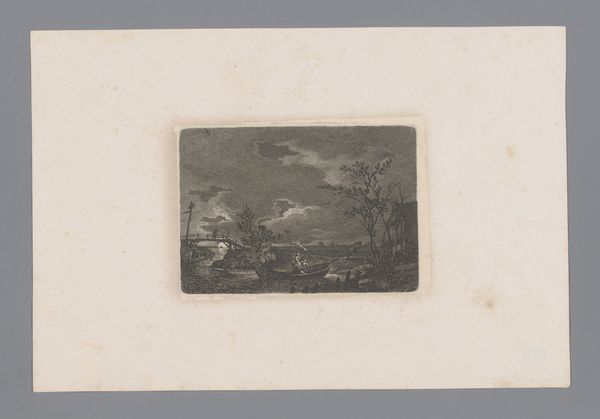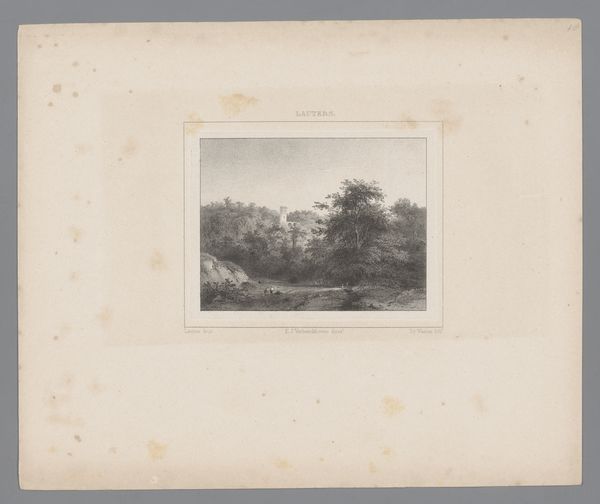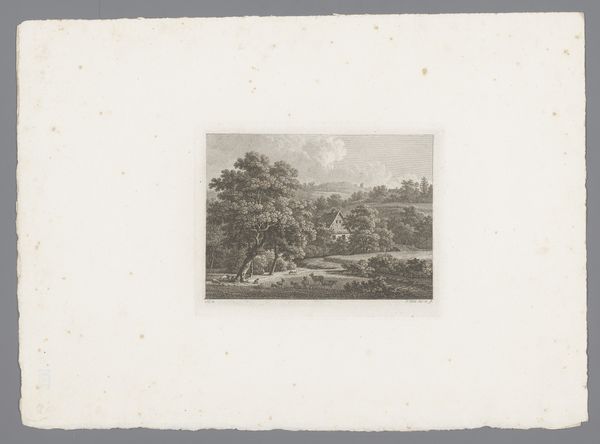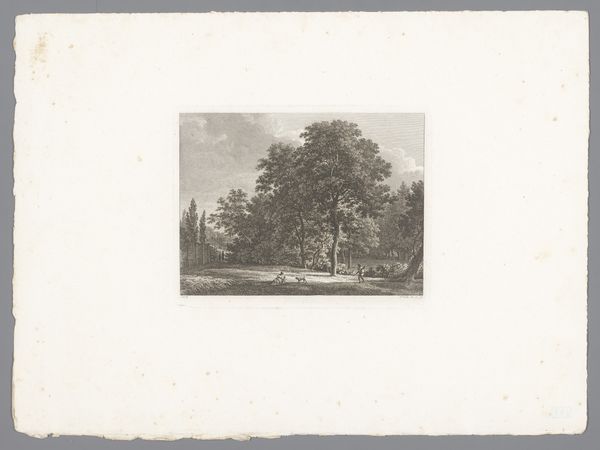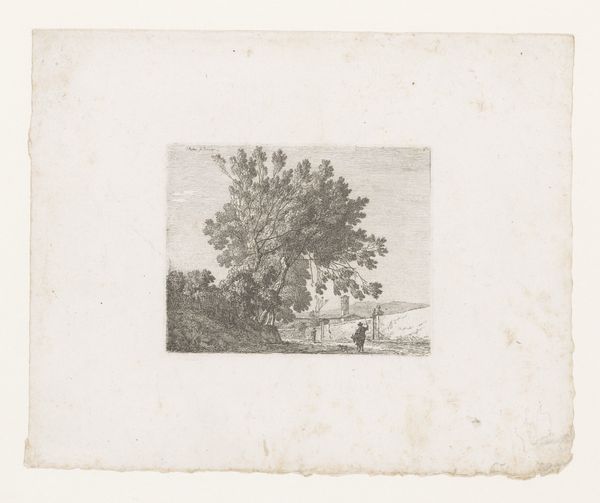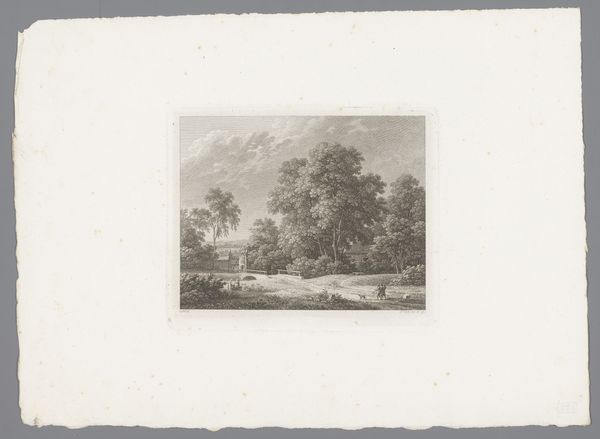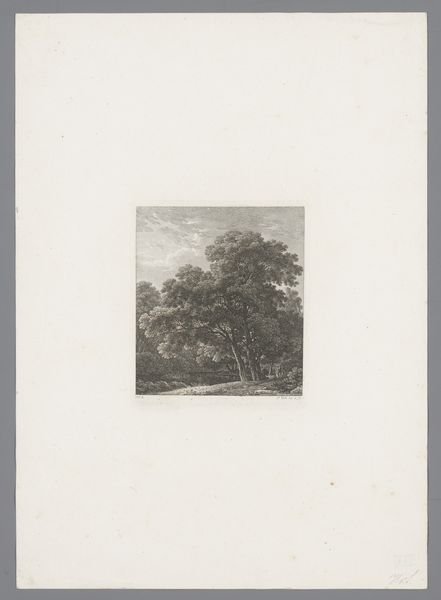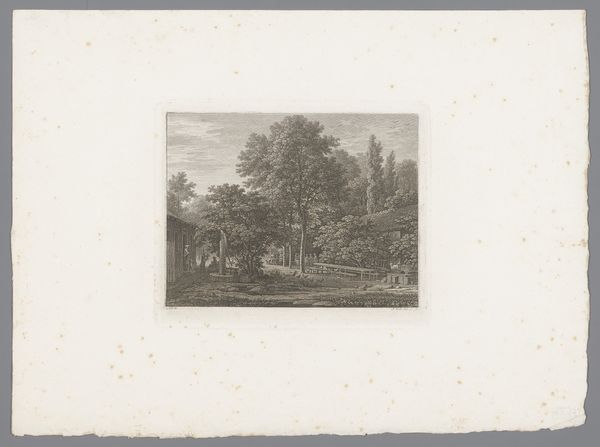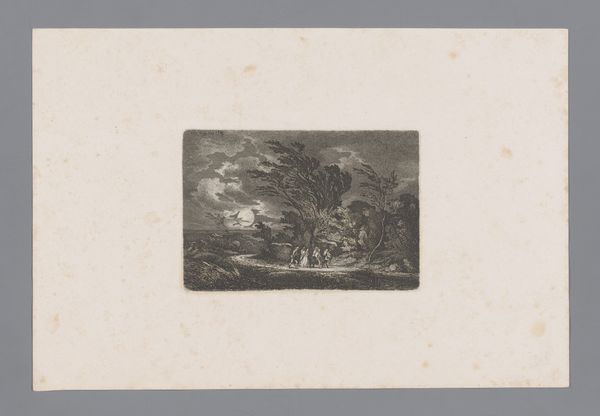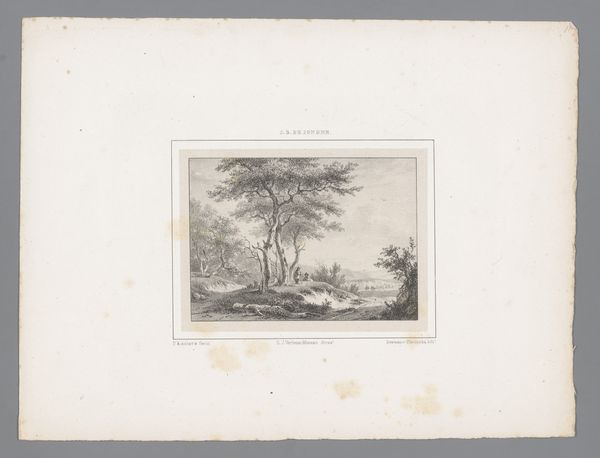
drawing, print, etching, paper
#
drawing
# print
#
etching
#
landscape
#
paper
#
road
Dimensions: height 89 mm, width 127 mm
Copyright: Rijks Museum: Open Domain
Curator: Here we have Carl August Lebschee’s, “Nachtelijk landschap met bomen langs een weg,” or "Nocturnal Landscape with Trees Along a Road," created around 1827 or 1828 using etching on paper. What's your take as you observe it? Editor: Ooh, it feels a bit like stepping into a dream. You know, the kind where you’re wandering along a familiar road, but everything feels a touch…uncanny. There’s a stillness, but it also crackles with something just under the surface. Like a secret only the trees know. Curator: Lebschee was working within the Romantic landscape tradition, which emphasized emotional impact, particularly through the depiction of nature. His utilization of the etching technique allowed him to produce prints, which made his work more widely accessible than a unique drawing or painting. Editor: You can definitely sense that romantic leaning! I get a kick out of the trees, honestly. The biggest one feels like an old gatekeeper, and those wispy clouds feel like it could whisper you something ancient if you just tilted your head and listened real hard. As an etching, it brings this intimacy and tactile depth you don't get sometimes from grand oil paintings, right? Curator: Absolutely, the line work and the gradations of tone he achieves through the etching process contribute to a very evocative, atmospheric effect. It is important to recognize the social implications of making art reproducible through prints; a relatively inexpensive print could carry these artistic sentiments to a broad range of people, shifting art’s accessibility. Editor: See, to me that reproducibility just makes it even dreamier. It’s like he bottled up a whole mood and set it loose in the world to haunt the imagination of whoever picks it up. It connects back to that dream state...it's shared now. Do you get that same sense, of being invited into a sort of shared experience by it? Curator: The democratization of art appreciation is central. I find it intriguing how, by considering these landscapes not just as artistic expression but also as commodities, we understand better their role in shaping cultural perceptions and values around nature itself. Editor: Hmm, now that's got my mind racing. I may need a longer stroll down this particular road! Curator: Indeed, a worthy consideration for reflecting on both artistry and its larger cultural significance.
Comments
No comments
Be the first to comment and join the conversation on the ultimate creative platform.
